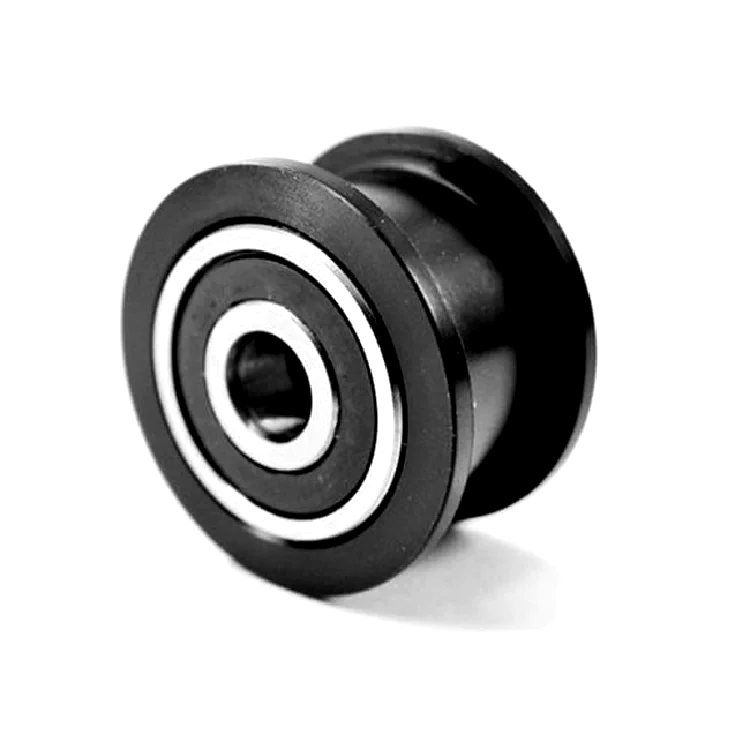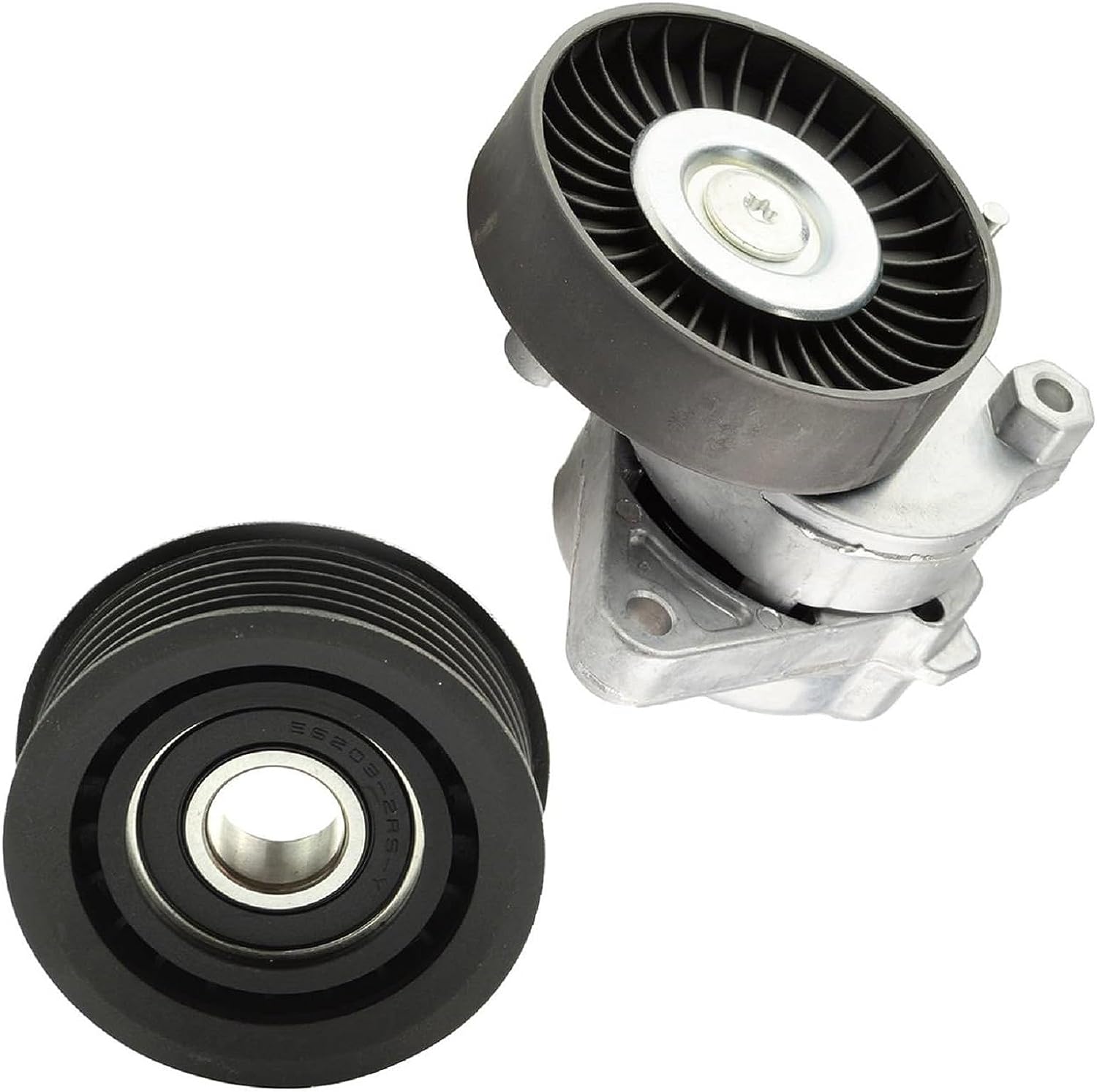Product Description
Lawn Mower Idler Pulley for Bunton # Plo786, Pl0786 Mtd Cub Cadet # 756-5716, 756-5713A, 756-0487, 756-1208
Description: #eastarsmallenginerepair
Lawn Mower Idler Pulley for Bunton # PLO786, PL0786 MTD Cub Cadet # 756-5716, 756-5713A, 756-0487, 756-1208
| Replaces | |
| Flat Idler Pulley Replaces Gilson part# 24445 | John Deere Part #’s AM106564, AM133756, AM33574, PT8761 |
| Lawn-Boy Part #’s 75715 | MTD Part #’s 756-5716, 756-5713, 756-5713A, 756-0487, 756-1208 |
| Murray Part #’s 44280, 6826 | Noma Part #’s 44280, 6826, Snapper:1-1571, 7011571, 7011571YP |
| Toro Part #’s 24445, 52-4580, 7451, 95-7668 | |
| Product Features | |
| Dimensions | 10 x 6 x 1 inches |
| Height | 3/4″ ID: 3/8″ |
| Weight | 12.0 ounces |
| Width | 4inch |
| Material | Steel |
| Pulley Type | V-Type |
| Pulley Diameter | 4 inch |
FAQ:
Notice
1. We maintain high standards of customer satisfaction! Your feedback is very important to us. Before giving us neutral or negative feedback, please contact us to satisfactorily address your concerns.
2. Please compare the good’s appearance, shape, size with your original parts before ordering.
3. Due to the different color resolution settings of the display, the CHINAMFG may have a color difference, please know it.
4. All our products are non-assembled, pictures are for reference only.
Problem with An Order?
We work hard to get everything right but mistakes happen and we want to fix them quickly, please ask any questions using the Made-in-China system before starting a dispute.
Feedback
We maintain high standards of CHINAMFG and strive for 100% customer satisfaction! If you are not satisfied with our products or services please contact us first, sincerely hope through our cooperation, we can resolve the problems smoothly.
About Us
We do retail and wholesale for gasoline chainsaw, brush cutter, grass trimmer, and other garden tool parts. Welcome here to pick out and buy.
Contact
If you have questions or problems please leave messages, we will reply to you as soon as possible.
| Certification: | CE, ISO |
|---|---|
| Pulley Sizes: | Type A |
| Manufacturing Process: | Forging |
| Material: | Carbon Steel |
| Surface Treatment: | Electroplating |
| Application: | Chemical Industry, Grain Transport, Mining Transport, Power Plant, Outdoor Power Equipments |
| Samples: |
US$ 9/Piece
1 Piece(Min.Order) | |
|---|
| Customization: |
Available
| Customized Request |
|---|
What is the significance of proper alignment and tensioning in idler pulley systems?
Proper alignment and tensioning in idler pulley systems are of utmost significance for their optimal performance and longevity. Here’s a detailed explanation of the significance of proper alignment and tensioning:
1. Efficient Power Transmission:
Proper alignment and tensioning ensure efficient power transmission in idler pulley systems. When the belts or chains are correctly aligned with the pulleys, there is maximum contact and engagement, minimizing slippage and power loss. Optimal tensioning ensures that the belts or chains are appropriately tensioned, allowing for efficient transfer of power from the driving pulley to the driven pulley. Efficient power transmission improves the overall performance and productivity of the system.
2. Reduced Wear and Tear:
Proper alignment and tensioning help reduce wear and tear on belts, chains, pulleys, and other system components. Misalignment or inadequate tension can cause excessive stress, uneven loading, and premature wear. Misaligned belts or chains can rub against pulleys or adjacent components, leading to accelerated wear and potential damage. By ensuring proper alignment and tensioning, the system components experience minimal friction, resulting in reduced wear and extended service life.
3. Noise Reduction:
Proper alignment and tensioning contribute to noise reduction in idler pulley systems. Misaligned belts or chains can generate noise due to rubbing or vibration. Inadequate tensioning can cause belts or chains to slip or vibrate, resulting in noise generation. By aligning the belts or chains accurately and applying the correct tension, the system operates smoothly and quietly, enhancing the comfort and usability of the equipment.
4. System Stability and Reliability:
Proper alignment and tensioning promote system stability and reliability. When belts or chains are aligned correctly, they remain securely engaged with the pulleys, minimizing the risk of disengagement or derailing. Optimal tensioning ensures that the belts or chains maintain consistent tension, preventing slack or excessive tightness that could compromise system operation. A stable and reliable idler pulley system is crucial for maintaining continuous and trouble-free operation in various applications.
5. Extended Component Lifespan:
Proper alignment and tensioning help extend the lifespan of system components, including belts, chains, pulleys, and bearings. Misalignment and improper tensioning exert additional stress on these components, leading to accelerated wear and potential failure. By maintaining proper alignment and tension, the load is evenly distributed, reducing the strain on individual components and promoting their durability. Extended component lifespan translates to reduced maintenance costs and increased overall system productivity.
6. Safety:
Proper alignment and tensioning contribute to the safety of idler pulley systems. Misaligned belts or chains can pose safety hazards by coming into contact with surrounding equipment or personnel. Inadequate tensioning can result in sudden belt or chain disengagement, causing unexpected machine shutdowns or potential injuries. By ensuring proper alignment and tensioning, the risk of accidents or equipment damage is minimized, enhancing the safety of the working environment.
Overall, proper alignment and tensioning are vital for the efficient operation, reliability, longevity, noise reduction, and safety of idler pulley systems. Regular inspection, adjustment, and maintenance of alignment and tensioning parameters are essential to optimize system performance and maintain the integrity of the components involved.
What types of belts or chains are typically guided by idler pulleys?
Idler pulleys are commonly used to guide and support various types of belts or chains in mechanical systems. Here’s a detailed explanation of the types of belts or chains that are typically guided by idler pulleys:
1. V-Belts:
Idler pulleys are frequently used to guide V-belts. V-belts have a trapezoidal cross-section and are commonly used in applications that require high torque transmission, such as automotive engines, industrial machinery, and HVAC systems. Idler pulleys help maintain proper tension and alignment of V-belts, ensuring efficient power transmission and preventing slippage.
2. Flat Belts:
Flat belts, as the name suggests, have a flat, rectangular cross-section. They are used in applications where a wide contact surface area is required, such as conveyor systems, printing machines, and textile machinery. Idler pulleys guide and support flat belts, helping to maintain tension, alignment, and proper engagement with other pulleys or components.
3. Timing Belts:
Timing belts, also known as synchronous belts, have teeth on the inner surface. They are commonly used in applications that require precise power transmission, such as automotive engines, robotics, and precision machinery. Idler pulleys play a critical role in guiding and tensioning timing belts, ensuring accurate synchronization between the driving and driven components.
4. Chain Drives:
Idler pulleys are also used to guide and support chains in chain drive systems. Chains are widely used in applications that require high load carrying capacity and durability, such as motorcycles, bicycles, and industrial machinery. Idler pulleys help maintain proper tension, alignment, and engagement of the chain, ensuring smooth and efficient power transmission.
5. Serpentine Belts:
Serpentine belts are wide, multi-ribbed belts commonly used in automotive engines to drive various components, such as the alternator, power steering pump, and air conditioning compressor. Idler pulleys are integral in guiding and tensioning serpentine belts, ensuring proper operation and preventing belt slippage.
It’s important to note that the specific type of belt or chain guided by idler pulleys will depend on the application and the requirements of the mechanical system. Factors such as load capacity, speed, torque, and environmental conditions will influence the selection of the appropriate belt or chain type and the corresponding idler pulleys.
How does the size and diameter of an idler pulley affect its performance?
The size and diameter of an idler pulley play a significant role in determining its performance characteristics. Here’s a detailed explanation of how the size and diameter of an idler pulley affect its performance:
1. Tension and Belt Engagement:
The size and diameter of an idler pulley impact the tension and engagement of the belt. A larger idler pulley will create more belt wrap around its circumference, resulting in increased belt contact and improved grip. This helps to maintain proper tension in the belt and prevent slippage, especially in high-torque applications. Conversely, a smaller idler pulley may have less belt wrap, leading to reduced grip and potentially lower tension.
2. Belt Speed:
The size and diameter of an idler pulley affect the speed at which the belt travels. A larger idler pulley will cover a greater distance per revolution, resulting in a higher belt speed. This can be advantageous in applications where increased speed is desired. Conversely, a smaller idler pulley will cover a shorter distance per revolution, leading to a slower belt speed.
3. Belt Flexibility:
The size and diameter of an idler pulley impact the flexibility of the belt. A larger idler pulley allows for a larger bend radius, reducing the stress on the belt and improving its durability. It also minimizes the risk of excessive bending or flexing that could lead to premature wear or failure. In contrast, a smaller idler pulley may require the belt to bend more sharply, potentially increasing the risk of damage or wear.
4. System Clearance:
The size and diameter of an idler pulley affect the overall clearance in the mechanical system. In tight spaces or constrained environments, a smaller idler pulley may be preferred, as it requires less clearance. Conversely, a larger idler pulley may require additional space to accommodate its size.
5. Load Distribution:
The size and diameter of an idler pulley impact its ability to distribute the load across the belt. A larger idler pulley can distribute the load over a larger surface area, reducing the stress on the belt and other components. It helps to minimize wear and prolong the life of the system. On the other hand, a smaller idler pulley concentrates the load on a smaller area, potentially increasing the risk of localized wear or failure.
6. Bearing Life and Friction:
The size and diameter of an idler pulley influence the bearing life and friction within the system. Larger idler pulleys typically have larger bearings, which can handle higher loads and exhibit improved durability. They also tend to generate lower friction, leading to reduced heat and wear. In contrast, smaller idler pulleys may have smaller bearings that may have limitations in terms of load capacity and friction.
It’s important to note that the specific requirements for size and diameter of an idler pulley will depend on the application and the intended function within the mechanical system. Factors such as belt type, load requirements, speed, and space constraints should be considered when selecting the appropriate size and diameter of an idler pulley for optimal performance.
editor by CX
2023-09-21




